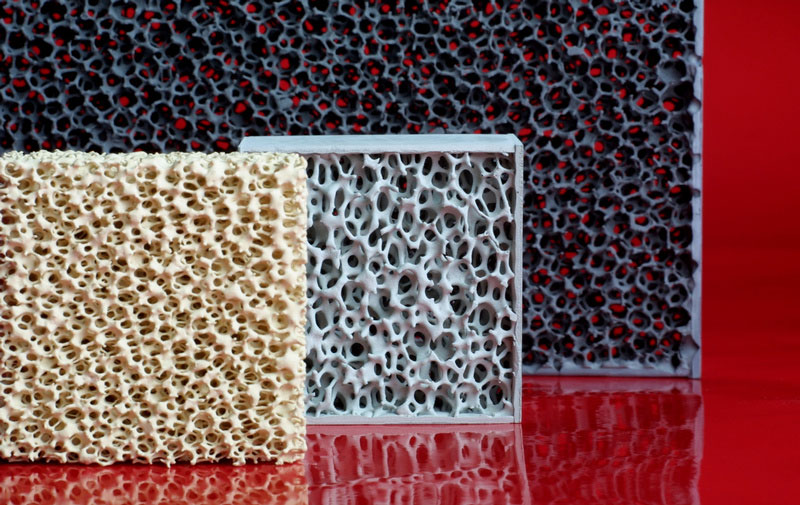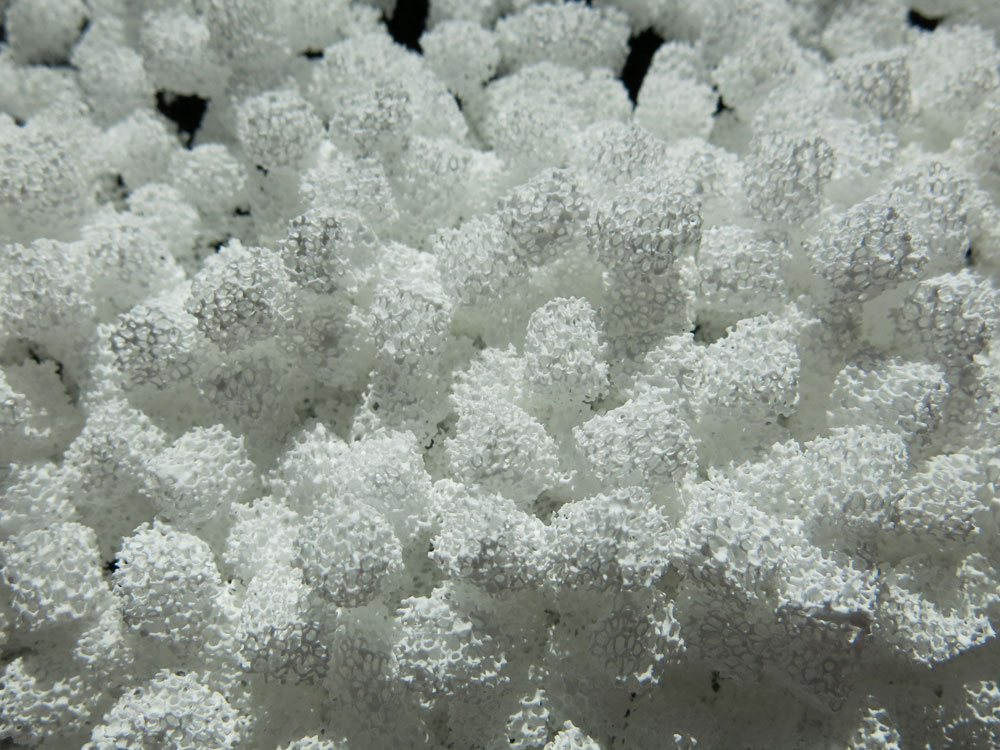Open cellular ceramic foams are developed and manufactured by Fraunhofer IKTS using the Schwartzwalder replica method. Therefore, components made of open cellular polyurethane foam are impregnated with ceramic slurries. In a next step, the oversized material is pressed out, so that only the surfaces of the polymer struts are covered with the ceramic material. The wet ceramic films are dried and the foam parts are debindered whereby the polymer foam is burned out. In a last step, the ceramic is sintered according to the specific sintering conditions of the material. As a result, the ceramic foam components have almost similar cellular structures and geometries as compared to the starting polymer foam parts.
This manufacturing method is well established for the production of foundry filters in very large scales. Fraunhofer IKTS further develops this technology for new cellular materials, advancements of existing products and for the opening of new applications. Therefore, highly specialized application laboratories have been built over the last few years, where foam ceramics can be developed and manufactured using rolling and centrifugation techniques. This equipment allows for the manufacturing of prototypes but also includes all opportunities for a production of small and medium foam series. For large production numbers, Fraunhofer IKTS has put into operation a continuously working, modular coating line, which allows for processes under industrial coating conditions. Subsequently, important parameters can be generated now to switch from lab to industrial manufacturing.
Another research focus is on highly filled slurries with optimal flow behavior, which are essential for foams with outstanding properties. Over the years, numerous recipes for ceramic materials have been generated, e.g. silicon carbide, alumina, cordierite, which are under permanent development up to now. At Fraunhofer IKTS, all these materials can be processed using highly efficient mixing aggregates in variable sizes and will be evaluated by rheological measurement methods to describe and classify the flow behavior of the slurries. These measurement values can be used for the development of quality control processes later.
Additionally, efficient analytic methods are offered for the characterization of material and application-oriented properties like density, cell size, pressure loss and strength. Catalyst and burner test rigs complete the equipment.
Services offered
- Development of new ceramic foam materials and metal foams
- Advancement of slurry properties for foam coating
- Technological development and testing for the manufacturing of foam ceramics
- Development of quality control concepts for the foam coating
- R&D projects for the development of new foam applications
Technical equipment
- Extensively equipped laboratories with mixing, rolling and centrifugation aggregates for foam coating
- Modularly constructed, continuously working foam coating plant
- Extensive rheological measurement possibilities for slurries
- Equipment for debinding, sintering and mechanical processing of foam ceramics
- Aggregates and test rigs for measurements of ceramic foam properties
Examples and references
- Silicon carbide foams for porous burners and solar receivers
- Ceramic foam filters and catalysts for fire places
- High-temperature stable catalyst system for the thermal reduction of lean gases

